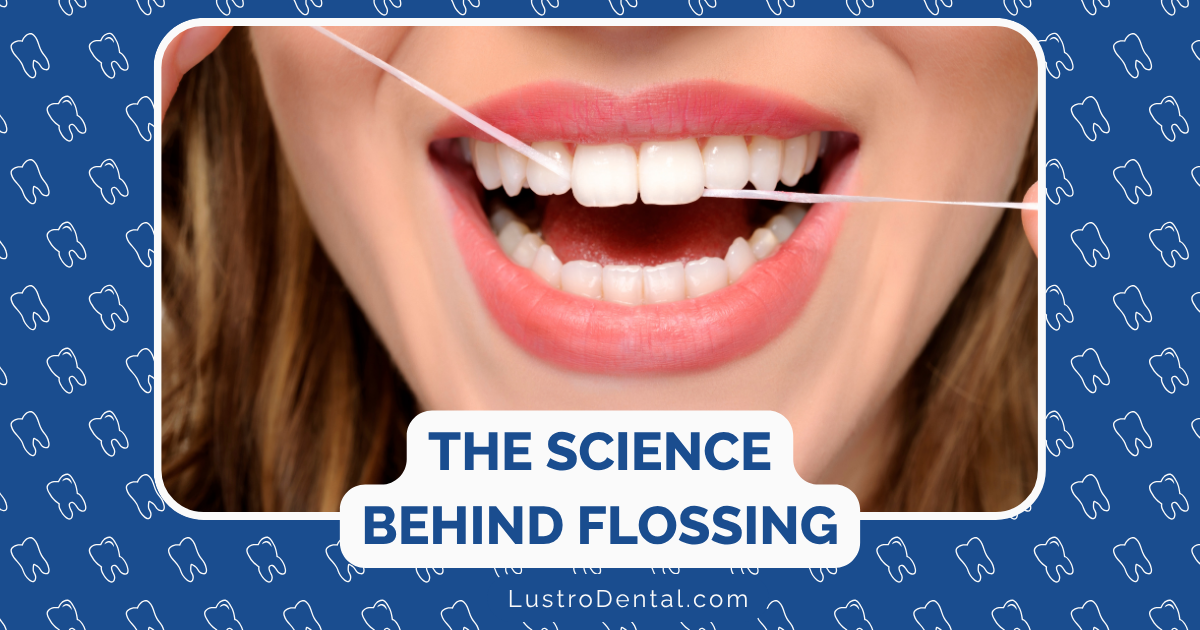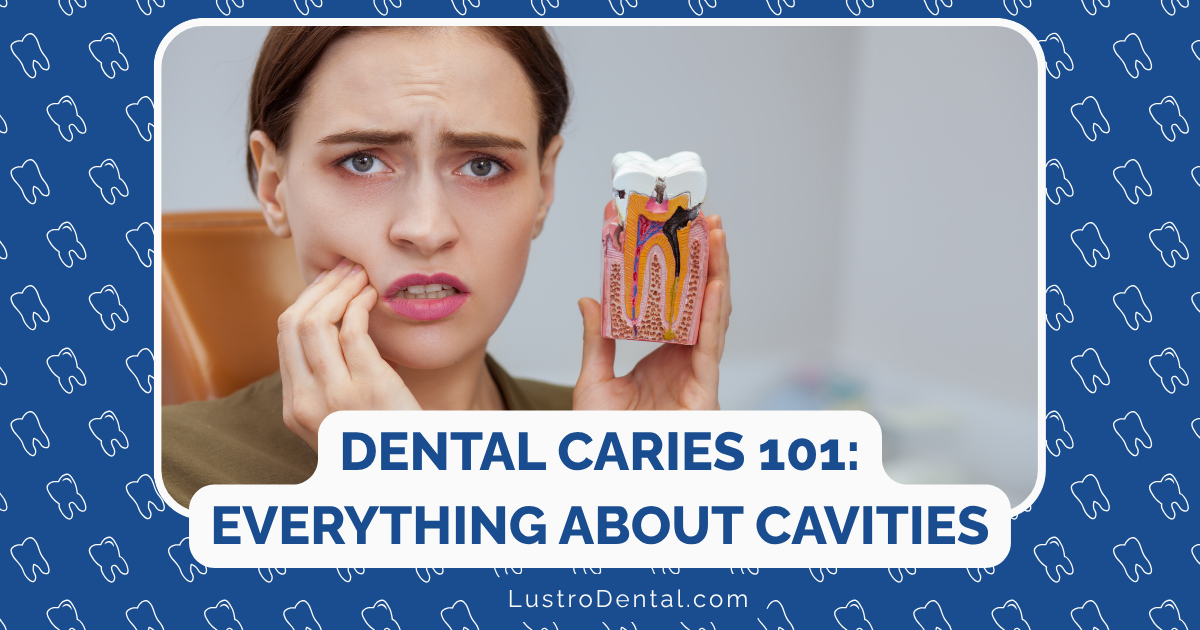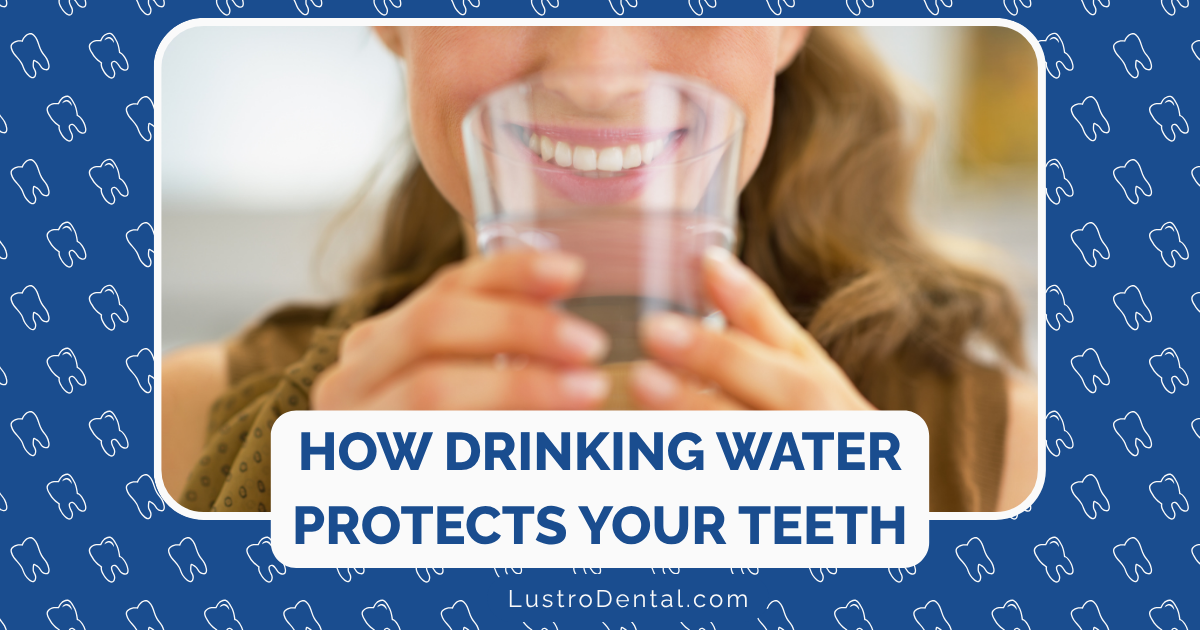The Science of Flossing: Why Dentists Insist It’s Non-Negotiable

“Have you been flossing regularly?”
It’s the question many of us dread at dental checkups, often followed by a moment of guilt and a half-hearted promise to do better. Despite our reluctance, dental professionals have remained steadfast in their recommendation: flossing is essential for optimal oral health.
But in recent years, headlines questioning the scientific evidence behind flossing have left many wondering: Is this daily dental chore truly necessary, or just another health habit we can safely ignore?
In this comprehensive guide, we’ll dive deep into the science of flossing, examine the research, and explain why dentists continue to insist that flossing remains non-negotiable for maintaining oral health.
The Anatomy of Your Mouth: Why Brushing Alone Isn’t Enough
To understand why flossing matters, we first need to understand the architecture of our mouths. Your teeth have five surfaces: the top (occlusal), the front (facial/labial), the back (lingual), and two sides (mesial and distal). When you brush your teeth, even with perfect technique, you’re only cleaning three of these five surfaces.
Dr. Sarah Chen, a periodontist at Columbia University, explains: “The proximal surfaces—where teeth meet each other—create contact areas that your toothbrush bristles simply cannot reach. These tight spaces are perfect environments for bacteria to thrive, regardless of how diligently you brush.”
In fact, according to research published in the Journal of Dental Research, approximately 40% of your tooth surfaces are located between your teeth. This means that without flossing or other interdental cleaning, nearly half of your tooth surfaces remain uncleaned.
“Think of it like washing only 60% of your body in the shower,” says Dr. Michael Rodriguez, DDS. “You wouldn’t consider yourself clean, yet many people are effectively doing the equivalent with their teeth.”
The Microbiology of Plaque: A Closer Look
Dental plaque is a complex biofilm—a community of bacteria embedded in a sticky matrix that adheres to tooth surfaces. When left undisturbed, this biofilm matures and becomes increasingly difficult to remove.
Research from the American Academy of Periodontology shows that plaque begins forming within hours after cleaning. Within 24-36 hours, this biofilm starts to mature and organize into a more resilient structure. After 72 hours, mature plaque is significantly more difficult to remove and begins to release more harmful byproducts.
“The interproximal spaces between teeth are particularly vulnerable to plaque buildup,” notes dental hygienist Jennifer Marsh. “These areas have less saliva flow and mechanical cleaning from the tongue and cheeks, creating protected environments where bacteria can flourish.”
A 2023 study published in the Journal of Clinical Periodontology used advanced microscopy techniques to visualize plaque formation in interproximal spaces. The researchers found that without interdental cleaning, these spaces developed complex, mature biofilms within just 48 hours—even in participants with excellent brushing habits.
The Scientific Evidence: What Research Actually Shows
In 2016, the Associated Press published a widely-circulated report suggesting that the evidence supporting flossing was “weak and unreliable.” This report was based on the observation that flossing had been removed from the U.S. Dietary Guidelines for Americans, and cited a lack of high-quality studies demonstrating its effectiveness.
This reporting led to confusion and skepticism about flossing. However, a closer examination of the scientific literature reveals a more nuanced picture.
The Cochrane Review: Understanding the Limitations
The most frequently cited evidence against flossing comes from a Cochrane Review that analyzed 12 randomized controlled trials. This review found “weak, very unreliable evidence” that flossing plus toothbrushing may reduce gingivitis compared to toothbrushing alone.
However, as Dr. Lisa Warren, a periodontist, points out: “The Cochrane Review didn’t conclude that flossing doesn’t work—it concluded that the existing studies had methodological problems. This is a crucial distinction that was lost in much of the media coverage.”
These methodological issues included:
- Short study durations: Most studies followed participants for only 2-6 months, while dental disease develops over years.
- Self-reported flossing: Many studies relied on participants’ claims about their flossing habits, which are notoriously unreliable.
- Inadequate flossing technique: Without proper training and monitoring, participants likely flossed ineffectively.
- Small sample sizes: Many studies had too few participants to detect meaningful differences.
Newer and More Compelling Evidence
Since the 2016 controversy, several well-designed studies have provided stronger evidence supporting flossing:
- The San Antonio Longitudinal Study of Aging: This comprehensive study published in 2020 followed 686 older adults for five years. The results were striking: flossers had significantly less periodontal disease, fewer dental caries, and lost fewer teeth over the study period. Specifically, non-flossers lost an average of 4 teeth over five years, while flossers lost only 1 tooth on average.
- The Journal of Periodontology Study: A 2018 clinical trial found that flossing before brushing was significantly more effective at removing plaque than brushing alone or even brushing before flossing. This study used supervised flossing techniques to ensure proper execution.
- The American Journal of Dentistry Research: A 2022 study examining 156 adults found that professional flossing reduced interproximal gingivitis by 38% compared to non-flossing controls, demonstrating that when done correctly, flossing has measurable benefits.
- Pediatric Dentistry Research: A systematic review indicated that professional flossing performed on young children was associated with a 40% risk reduction for interproximal caries, suggesting that flossing is particularly valuable for preventing cavities between teeth.
Dr. Chen emphasizes: “When we look at studies where flossing is performed correctly and consistently, the evidence supporting its benefits becomes much clearer. The issue isn’t that flossing doesn’t work—it’s that most people don’t floss correctly or consistently enough to see the benefits in short-term studies.”
Beyond Gingivitis: The Systemic Health Connection
The importance of flossing extends beyond preventing gingivitis and cavities. A growing body of research suggests that oral health is intimately connected to systemic health.
“Periodontal disease isn’t just about your gums,” explains Dr. Rodriguez. “It’s a chronic inflammatory condition that has been linked to numerous systemic health issues.”
Research published in the Journal of the American Heart Association has found associations between periodontal disease and:
- Cardiovascular disease: People with periodontal disease are 2-3 times more likely to have a heart attack, stroke, or other serious cardiovascular event.
- Diabetes: Periodontal disease can make blood glucose control more difficult for people with diabetes, and diabetes increases the risk of developing periodontal disease.
- Respiratory diseases: Bacteria from the mouth can be aspirated into the lungs, potentially causing or aggravating respiratory conditions.
- Pregnancy complications: Periodontal disease has been associated with preterm birth and low birth weight.
- Alzheimer’s disease: Recent research suggests that P. gingivalis, a bacterium associated with periodontal disease, may play a role in the development of Alzheimer’s disease.
“When we recommend flossing, we’re not just thinking about your teeth and gums,” notes Dr. Warren. “We’re considering your overall health and well-being. Preventing periodontal disease through proper interdental cleaning may have far-reaching benefits beyond your mouth.”
The Mechanics of Flossing: Why It Works When Done Correctly
The effectiveness of flossing depends largely on proper technique. Understanding the mechanics helps explain why dentists insist it’s non-negotiable.
Physical Removal of Plaque and Food Particles
Dental floss works primarily through mechanical action. When properly wrapped around a tooth in a C-shape and moved up and down along the side of the tooth, floss physically dislodges and removes:
- Food particles trapped between teeth
- Bacterial biofilm (plaque) adhering to tooth surfaces
- Early calculus formation before it hardens into tartar
“The physical action of flossing disrupts the bacterial colonies growing between your teeth,” explains dental hygienist Marsh. “This prevents them from organizing into the more harmful, mature biofilms that cause inflammation and disease.”
Accessing the Subgingival Area
Proper flossing technique includes gently sliding the floss below the gumline into the sulcus—the small space between the tooth and gum tissue. This area is particularly important for periodontal health.
“The subgingival area is where periodontal disease begins,” notes Dr. Chen. “When floss is correctly inserted below the gumline, it can remove bacteria from this critical zone that brushing simply cannot reach.”
Research using scanning electron microscopy has shown that properly executed flossing can remove up to 80% of plaque from interproximal surfaces, including areas below the gumline.
Breaking the Cycle of Inflammation
Gingivitis—the early stage of gum disease—is characterized by inflammation of the gum tissue. This inflammation is triggered by bacterial byproducts and the body’s immune response to the bacterial challenge.
“By removing the bacterial biofilm through flossing, you’re addressing the root cause of inflammation,” explains Dr. Rodriguez. “This allows the gum tissue to heal and return to a healthy state.”
A study in the Journal of Clinical Periodontology found that consistent, proper flossing reduced inflammatory markers in gingival crevicular fluid—the fluid that seeps from the gum crevice—by up to 48% after just two weeks.
The Interproximal Cavity Connection: A Compelling Reason to Floss
While much of the discussion around flossing focuses on gum health, one of the most concrete benefits is the prevention of interproximal cavities—decay that forms between the teeth.
“Interproximal cavities are particularly problematic,” says Dr. Warren. “They’re difficult to detect in early stages, often require more extensive treatment when discovered, and can quickly spread to adjacent teeth.”
Research published in the Journal of Dental Research found that individuals who reported regular flossing had 40% fewer interproximal cavities compared to non-flossers. This finding is particularly significant because:
- Interproximal cavities often require more invasive treatments like crowns rather than simple fillings
- They frequently lead to root canal therapy if they progress to the pulp
- They can compromise adjacent healthy teeth
- They’re more difficult to restore properly, leading to a higher risk of recurrent decay
“When patients ask me if they can skip flossing, I often show them X-rays of interproximal cavities,” notes Dr. Chen. “Once they understand that these spaces between teeth are prime real estate for cavity formation, they usually reconsider their stance on flossing.”
Common Objections to Flossing: Addressing the Barriers
Despite the evidence supporting flossing, many people still resist incorporating it into their daily routine. Understanding and addressing these objections is crucial for improving compliance.
“I Don’t Have Time”
This is perhaps the most common objection, but proper flossing takes only 60-90 seconds once you’ve developed the skill.
“I tell my patients to floss while doing something else they already do daily—watching TV, scrolling through social media, or even in the shower,” suggests dental hygienist Marsh. “Pairing flossing with an existing habit makes it much easier to incorporate into your routine.”
“It Makes My Gums Bleed”
Bleeding gums are actually a sign that flossing is needed, not a reason to avoid it. Healthy gums don’t bleed when flossed.
“Bleeding indicates inflammation, which is your body’s response to bacterial buildup,” explains Dr. Rodriguez. “With consistent flossing, the bleeding typically stops within 1-2 weeks as the inflammation subsides.”
A study in the Journal of Clinical Periodontology found that 94% of participants who experienced bleeding when they began flossing saw it resolve within 10 days of daily flossing.
“It’s Uncomfortable or Painful”
Discomfort usually stems from improper technique or inflamed gum tissue.
“Start with waxed floss, which slides more easily between teeth,” recommends Dr. Warren. “Be gentle, and avoid snapping the floss down onto the gums. With practice and as your gum health improves, the discomfort will diminish significantly.”
“I Can’t Reach My Back Teeth”
This is a legitimate challenge for many people, but solutions exist.
“Floss holders, floss picks, or interdental brushes can make reaching back teeth much easier,” suggests Dr. Chen. “The key is finding the tool that works best for your specific mouth anatomy and dexterity.”
“There’s No Scientific Evidence It Works”
As we’ve discussed, this objection is based on a misunderstanding of the research.
“The evidence supporting flossing is stronger than many realize, especially when we look at long-term studies and those with supervised flossing,” notes Dr. Rodriguez. “The biological plausibility is also compelling—we know that cleaning between teeth removes plaque and bacteria that cause disease.”
Flossing Alternatives: Are They Effective?
For those who struggle with traditional floss, several alternatives exist. But how do they compare in effectiveness?
Water Flossers
Water flossers (like Waterpik) use a pressurized stream of water to clean between teeth and below the gumline.
The Science: A 2013 study in the Journal of Clinical Dentistry found that water flossers removed 29% more plaque than string floss. They’re particularly effective for people with braces, implants, or bridges.
“Water flossers are an excellent alternative for patients who struggle with manual dexterity or have dental work that makes traditional flossing difficult,” says Dr. Warren. “They’re also gentler on inflamed gums, which can make them a good starting point for patients with gingivitis.”
Interdental Brushes
These small, cone-shaped brushes are designed to fit between teeth.
The Science: A systematic review in the Journal of Clinical Periodontology found that interdental brushes remove more plaque than floss, particularly in wider spaces between teeth.
“For patients with larger interdental spaces or periodontal disease, interdental brushes are often more effective than floss,” notes Dr. Chen. “They’re particularly useful for cleaning around implants, bridges, and areas with gum recession.”
Floss Picks
These Y-shaped plastic tools hold a short segment of floss between two prongs.
The Science: Research suggests they’re somewhat less effective than traditional floss because they don’t allow for the proper C-shape around the tooth, but they’re significantly better than not flossing at all.
“Floss picks are a good option for improving compliance,” suggests dental hygienist Marsh. “While the technique isn’t ideal, using them consistently is better than using traditional floss occasionally or not at all.”
The Proper Flossing Technique: Maximizing Effectiveness
Many people who do floss aren’t getting the full benefit because of improper technique. Here’s the method recommended by dental professionals:
- Break off about 18 inches of floss and wind most of it around one of your middle fingers. Wind the remaining floss around the same finger of the opposite hand.
- Hold the floss tightly between your thumbs and forefingers, with about 1-2 inches of floss between them.
- Guide the floss between your teeth using a gentle rubbing motion. Never snap the floss into the gums.
- When the floss reaches the gumline, curve it into a C-shape against one tooth. Gently slide it into the space between the gum and the tooth.
- Hold the floss against the tooth. Gently rub the side of the tooth, moving the floss away from the gum with up and down motions. Repeat this method on the adjacent tooth.
- Repeat for all teeth, including the back side of your last tooth. Use a new section of floss as it becomes worn or soiled.
“The C-shape technique is crucial,” emphasizes Dr. Rodriguez. “Many people simply move the floss up and down between the teeth without curving it around each tooth surface, which misses much of the plaque.”
A study in the International Journal of Dental Hygiene found that patients who received proper flossing instruction removed 55% more plaque than those who flossed using their usual technique.
The Ideal Routine: When and How Often to Floss
Timing and frequency matter when it comes to flossing effectiveness.
Once a Day is Sufficient
Research suggests that flossing once per day is sufficient for most people. More frequent flossing doesn’t appear to provide additional benefits for those with healthy gums.
“The key is thoroughness, not frequency,” explains Dr. Warren. “One complete, proper flossing session daily is more effective than multiple hasty attempts.”
Floss Before Brushing
A study published in the Journal of Periodontology found that flossing before brushing is more effective at removing plaque and retaining fluoride between teeth than brushing before flossing.
“Flossing first dislodges interdental plaque and food particles, allowing your toothbrush and toothpaste to reach these areas more effectively,” notes Dr. Chen. “It also helps fluoride from your toothpaste penetrate between teeth, providing greater protection against cavities.”
Evening Is Optimal
While any time is better than not flossing at all, evening flossing offers some advantages.
“Flossing before bed removes the day’s accumulation of food particles and bacteria,” suggests dental hygienist Marsh. “This prevents them from sitting between your teeth overnight when saliva flow is reduced, creating an ideal environment for bacterial growth.”
Special Considerations: When Flossing Is Even More Critical
While flossing is important for everyone, certain conditions make it even more crucial:
Orthodontic Treatment
Braces and other orthodontic appliances create additional surfaces for plaque to accumulate and make brushing less effective.
“For patients with braces, interdental cleaning is absolutely essential,” emphasizes Dr. Rodriguez. “Without it, the risk of white spot lesions, cavities, and gum inflammation increases dramatically.”
Water flossers and orthodontic floss threaders can help navigate around brackets and wires.
Implants and Bridges
Dental implants and bridges require special attention to prevent peri-implantitis and ensure longevity.
“The junction where an implant meets the gum tissue is particularly vulnerable to bacterial infection,” notes Dr. Warren. “Proper interdental cleaning around implants can significantly extend their lifespan.”
Diabetes and Immune Compromise
People with diabetes or compromised immune systems are more susceptible to periodontal disease and its complications.
“For patients with diabetes, flossing isn’t just about oral health—it’s about overall health,” explains Dr. Chen. “Controlling gum inflammation through proper interdental cleaning can help improve glycemic control.”
The Bottom Line: Why Dentists Won’t Back Down on Flossing
Despite occasional controversy in the media, dental professionals remain unwavering in their recommendation of daily flossing. This isn’t stubbornness or tradition—it’s based on:
- Biological plausibility: The mechanism by which flossing removes plaque from inaccessible areas makes logical sense.
- Clinical experience: Dentists and hygienists observe the difference between patients who floss and those who don’t on a daily basis.
- Long-term studies: When we look beyond short-term trials to longitudinal studies, the benefits of flossing become more apparent.
- Risk-benefit ratio: Flossing is low-cost, low-risk, and potentially high-benefit.
“As dental professionals, we see the consequences of inadequate interdental cleaning every day,” concludes Dr. Rodriguez. “We recommend flossing not because it’s tradition, but because we’ve seen firsthand the difference it makes in our patients’ oral health over the long term.”
Dr. Warren adds: “Even if the evidence for flossing were merely suggestive rather than definitive, the minimal cost, effort, and risk involved make it a worthwhile practice. It’s one of those rare health interventions with virtually no downside and potentially significant upside.”
So the next time you’re tempted to skip flossing, remember: those few minutes spent cleaning between your teeth are a small investment with potentially significant returns for your oral and overall health. And that’s something to smile about.







